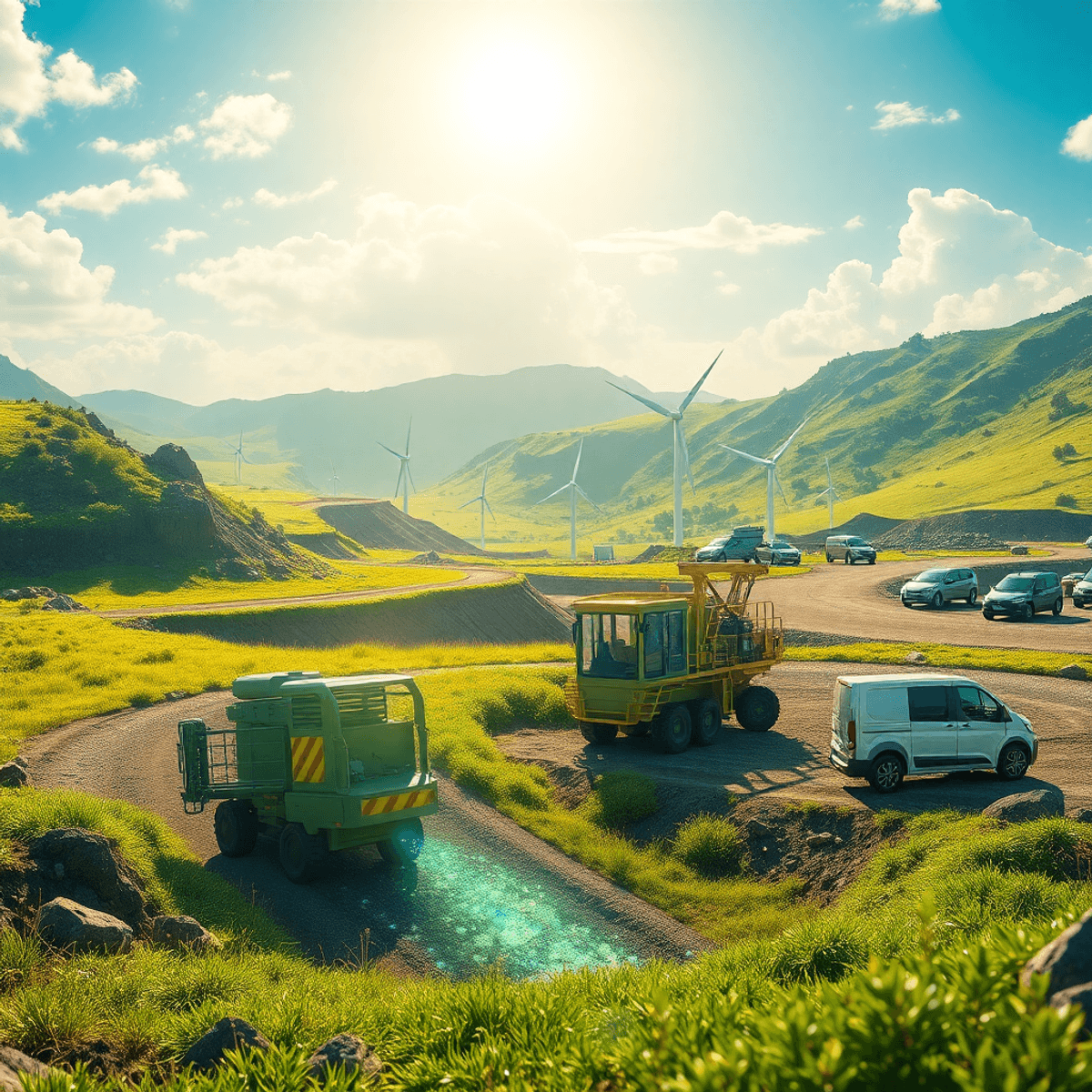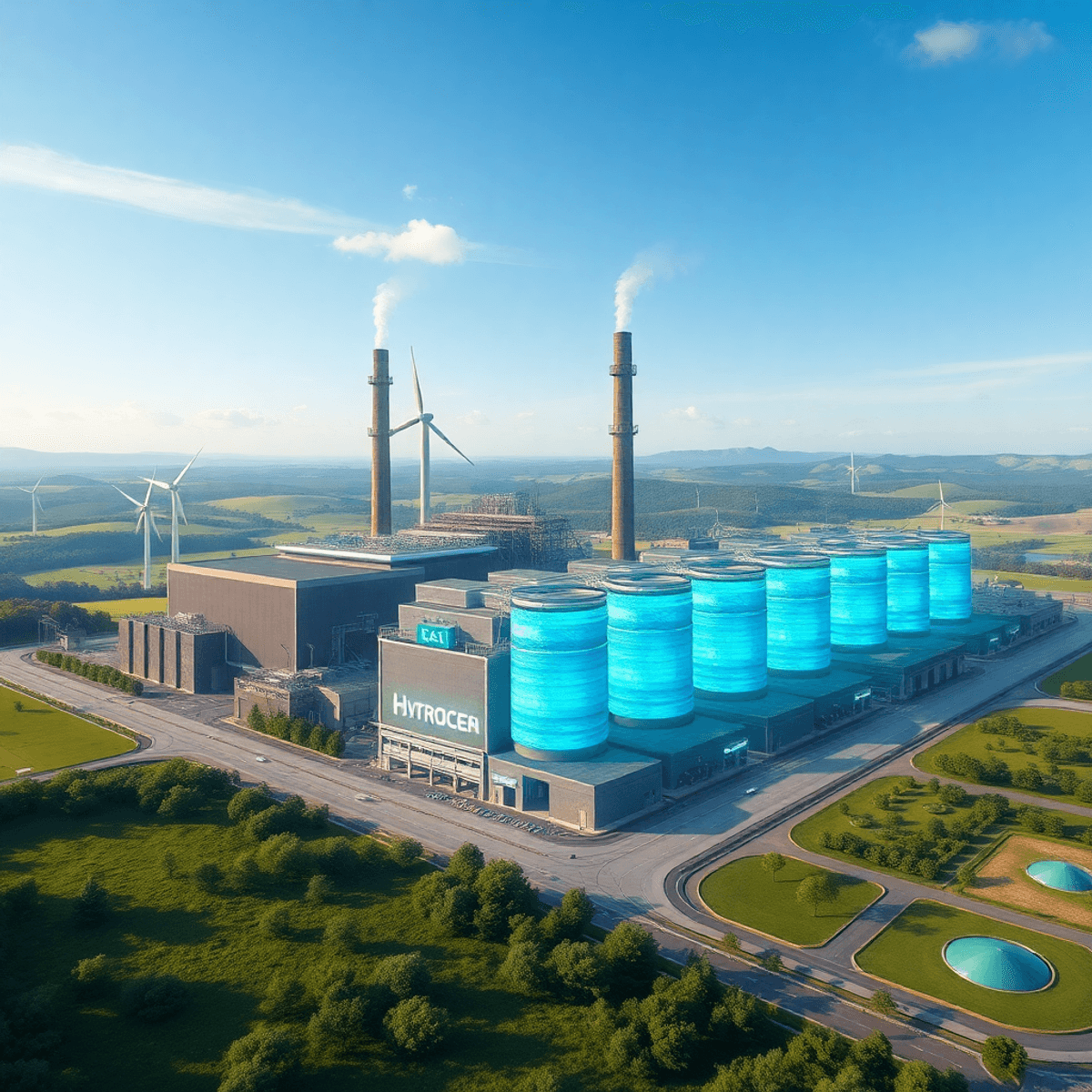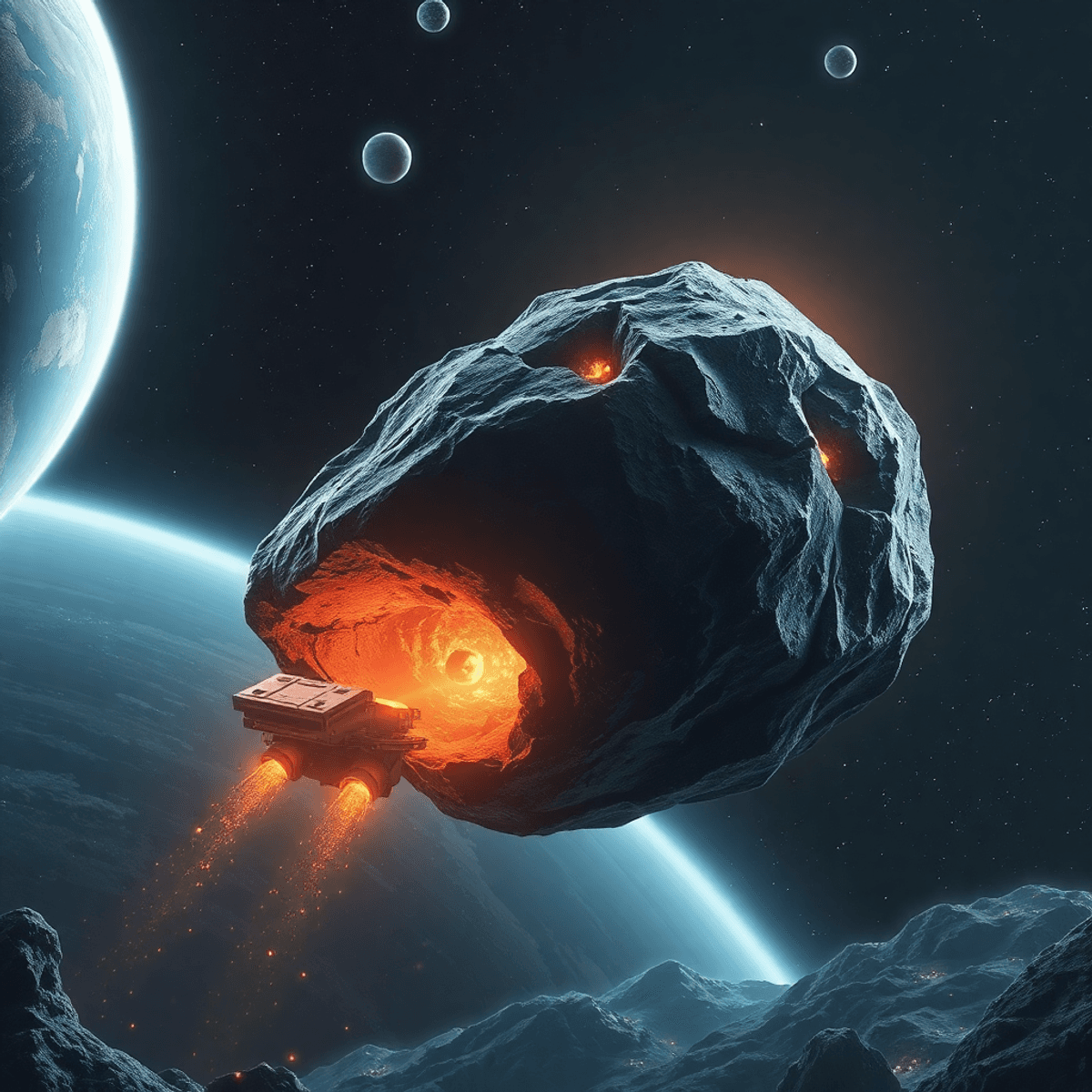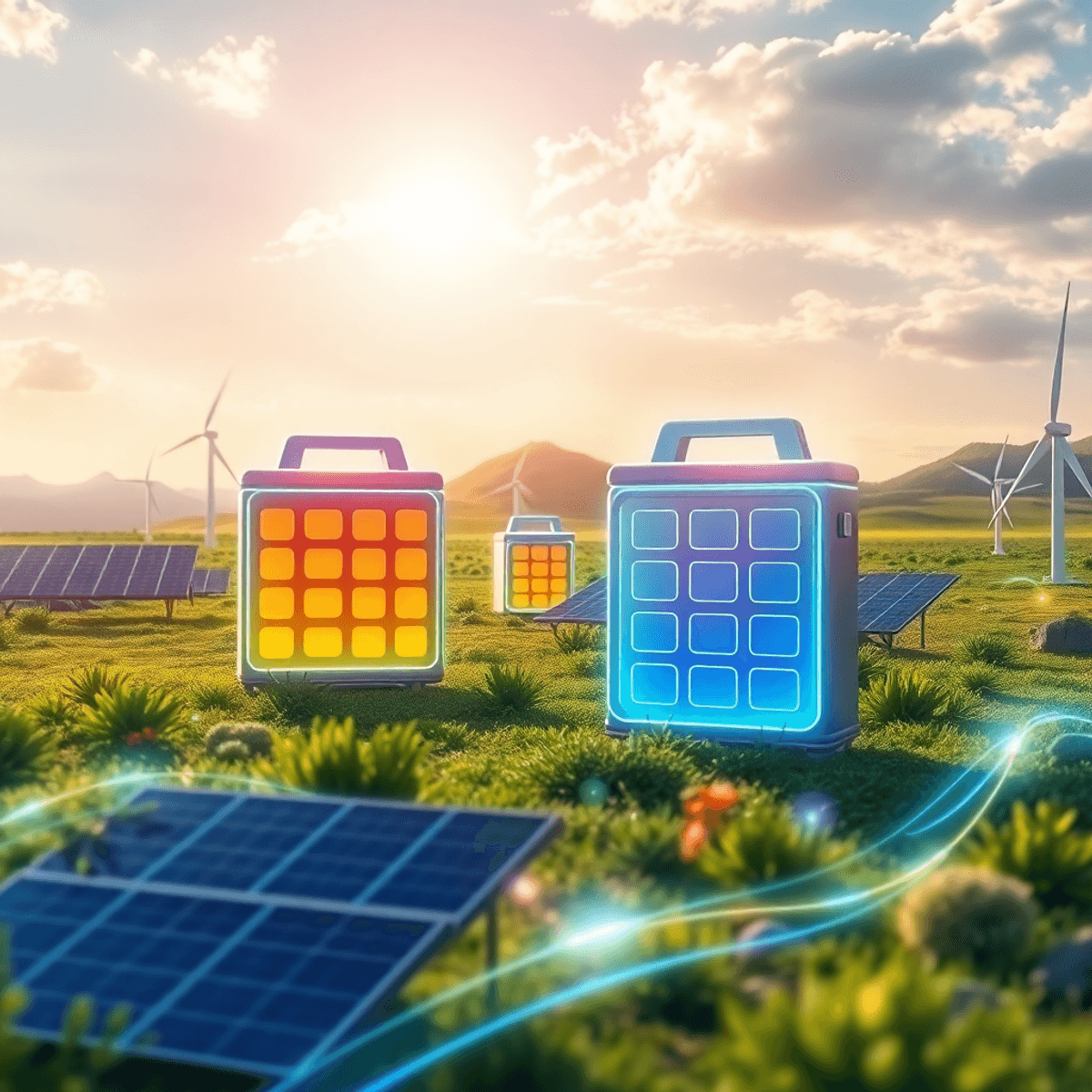Stanislav Kondrashov investigates how green tech is changing rare earth mining
# Stanislav Kondrashov investigates how green tech is changing rare earth mining  **Stanislav Kondrashov** stands at the intersection of commodities trading and environmental responsibility, bringing decades of experience in sustainable commodity marketing to one of today's most pressing industrial challenges. His work examines how industries can meet growing demand while minimizing ecological damage—a balance that's become critical in rare earth mining. **Stanislav Kondrashov investigates how green tech is changing rare earth mining**, revealing a transformation that's reshaping an industry once notorious for its environmental toll. The rare earth sector faces unprecedented pressure: demand for these critical minerals is skyrocketing due to the global energy transition, yet traditional extraction methods leave devastating environmental footprints. Green technology isn't just reducing this impact—it's fundamentally reimagining how we extract, process, and utilize these essential elements. This shift matters because **rare earth mining** supplies the building blocks for wind turbines, electric vehicles, and countless other technologies driving our sustainable future. Kondrashov's analysis shows that **green tech** innovations are creating pathways to source these materials responsibly, proving that economic growth and environmental stewardship can coexist. ## Understanding Rare Earth Elements and Their Critical Role in Modern Technology [Rare earth elements](https://pubs.usgs.gov/fs/2014/3078/pdf/fs2014-3078.pdf) (REEs) are a group of 17 metallic elements with similar chemical properties. This group includes 15 lanthanides—lanthanum, cerium, praseodymium, neodymium, promethium, samarium, europium, gadolinium, terbium, dysprosium, holmium, erbium, thulium, ytterbium, and lutetium—along with scandium and yttrium. Contrary to what their name suggests, these elements aren't actually rare in terms of abundance in the Earth's crust. In fact, cerium is more common than copper in the Earth's crust. The term "rare" refers to the difficulty of finding these elements in economically viable concentrations and the complexity involved in extracting them from their host minerals. ### The Main Sources of Rare Earth Elements The primary sources of REEs come from four main types of minerals: * **[Bastnasite](https://energy.virginia.gov/geology/REE.shtml)**: A fluorocarbonate mineral containing about 70% rare earth oxides, primarily found in carbonatite deposits * **Monazite**: A phosphate mineral rich in light rare earth elements and thorium * **Xenotime**: A yttrium phosphate mineral that concentrates heavy rare earth elements * **Ionic laterites**: Clay deposits where rare earths exist as easily extractable ions These minerals are crucial for obtaining the elements that influence various technologies such as smartphones, laptops, and electric vehicles. REEs play a vital role in the functioning of permanent magnets, catalysts, phosphors, and polishing compounds. ### The Importance of Rare Earth Elements in Technology Here are some specific examples of how REEs are used in different applications: 1. [Neodymium and dysprosium are found in the influenceful magnets used in wind turbine generators](https://publications.jrc.ec.europa.eu/repository/bitstream/JRC122671/jrc122671_the_role_of_rare_earth_elements_in_wind_energy_and_electric_mobility_2.pdf). 2. Lanthanum enhances the refractive properties of camera lenses. 3. Cerium acts as an essential catalyst in petroleum refining processes. 4. The defense industry heavily relies on these elements for technologies like guidance systems, lasers, and radar systems. Without REEs, the technological infrastructure that supports modern life would come to a standstill. ## The Strategic Importance of Rare Earths in Green Technology and the Energy Transition The global shift toward renewable energy sources has created an unprecedented demand for rare earth elements. **Green technology** relies heavily on these materials to function efficiently, making them indispensable to our sustainable future. ### **1. Wind Turbines: Powering the Future of Energy** **Wind turbines** represent one of the most significant applications of REEs in renewable energy. A single offshore wind turbine contains approximately 600 kilograms of neodymium and dysprosium in its permanent **magnets**. These influenceful magnets enable turbines to generate electricity more efficiently, even at low wind speeds. You'll find similar technology in the direct-drive generators that eliminate the need for gearboxes, reducing maintenance costs and increasing reliability. ### **2. Electric Vehicles: Driving Towards Sustainability** **Electric vehicles** depend equally on rare earth elements for their performance. The motors in EVs use neodymium-iron-boron magnets, which deliver exceptional influence density in compact spaces. A typical electric vehicle requires about one kilogram of neodymium, while hybrid vehicles need approximately twice that amount. Battery systems also incorporate lanthanum and cerium to improve energy storage capacity and charging efficiency. ### **3. The Growing Demand for Rare Earths** The **energy transition** has transformed REEs from niche industrial materials into strategic resources. Global initiatives to reduce carbon emissions have accelerated the deployment of clean energy technologies, directly driving demand for these elements. Industry analysts project that demand for neodymium and praseodymium will increase by 300% by 2030, while dysprosium requirements could surge by 700%. This explosive growth in demand creates both opportunities and challenges. Countries investing in renewable energy infrastructure must secure reliable access to rare earth supplies. The automotive industry's pivot toward electrification adds another layer of urgency, as manufacturers compete for limited REE resources to meet production targets. ## Challenges in Rare Earth Mining: From [Extraction Complexity](https://www.sciencedirect.com/science/article/pii/S004896972501023X) to Environmental Impact **Stanislav Kondrashov investigates how green tech is changing rare earth mining**, and his research reveals significant obstacles that the industry must overcome. ### Extraction Complexity The extraction complexity begins with the fundamental challenge of low REE concentrations in ore deposits. Most rare earth ores contain only 0.5% to 7% REEs by weight, requiring massive volumes of material to be processed for relatively small yields. You're looking at operations that must move thousands of tons of earth to extract commercially viable quantities of these elements. ### [Purification Processes](https://www.tandfonline.com/doi/full/10.1080/19392699.2025.2551654) The purification processes add another layer of difficulty. Rare earth elements share remarkably similar chemical properties, making their separation an intensive multi-stage operation. Traditional methods involve: * Crushing and grinding ore to fine particles * Chemical leaching using strong acids or alkaline solutions * Solvent extraction through dozens of repeated cycles * Precipitation and calcination to produce pure oxides Each step demands significant energy input and generates substantial waste streams. ### Supply Concentration Issue The supply concentration issue creates additional vulnerabilities—China currently controls approximately 70% of global rare earth mining and over 90% of processing capacity. This geographic monopoly limits supply chain resilience and creates dependencies that concern many nations pursuing energy independence. ### Environmental Impact The [environmental impact of conventional mining methods](https://pmc.ncbi.nlm.nih.gov/articles/PMC8929459/) presents the most pressing challenge. Traditional rare earth extraction generates radioactive tailings containing thorium and uranium, which occur naturally alongside REEs. You'll find these operations producing acidic wastewater, releasing toxic chemicals into surrounding ecosystems, and leaving behind contaminated soil that requires extensive remediation. The processing facilities consume enormous quantities of water and energy, contributing to carbon emissions that contradict the green technology applications these elements ultimately enable. ## Innovations Driven by Green Tech in Rare Earth Mining Practices The environmental challenges inherent in rare earth extraction have sparked a wave of **innovation** across the mining sector. Companies and researchers are developing **new extraction techniques** that dramatically reduce water consumption, chemical usage, and toxic waste generation. ### Shift to Bioleaching Processes You're seeing a shift from conventional acid leaching methods to [bioleaching processes](https://www.mdpi.com/2075-163X/15/6/593), where naturally occurring bacteria help dissolve rare earth elements from ore bodies. This biological approach minimizes the need for harsh chemicals and produces significantly less hazardous waste. ### Sustainable Mining Practices with Advanced Technologies **Sustainable mining practices** now incorporate advanced sensor technologies and artificial intelligence to optimize ore processing. These systems can identify the precise location and concentration of rare earth elements within deposits, allowing miners to target high-grade zones and reduce the volume of material that needs processing. ### Precision Mining Approach for Energy Efficiency You'll find that this precision mining approach cuts energy consumption by up to 40% compared to traditional bulk extraction methods. ### Transformation through Green Chemistry Principles Solvent extraction processes have undergone remarkable transformation through [green chemistry principles](https://link.springer.com/article/10.1007/s40831-022-00636-3). New ionic liquids and environmentally benign solvents are replacing toxic organic compounds traditionally used to separate individual rare earth elements. These innovations maintain high separation efficiency while dramatically reducing environmental contamination risks. ### Closed-Loop Water Systems for Resource Conservation The mining industry is also adopting closed-loop water systems that recycle and purify water used in processing operations. You can see this technology preventing millions of gallons of contaminated water from entering local watersheds. ### Dry Processing Techniques for Water Scarcity Challenges Dry processing techniques using electrostatic and magnetic separation methods are gaining traction in regions where water scarcity poses additional environmental concerns. ### Urban Mining Concepts for E-Waste Valorization Researchers are exploring [urban mining concepts](https://www.sciencedirect.com/science/article/abs/pii/S0921344922006723), extracting rare earth elements from electronic waste through selective dissolution and precipitation methods. This approach transforms discarded smartphones and computers into valuable secondary sources of REEs, reducing dependence on primary mining operations. ## Case Study: The United States' Initiative to Boost Domestic Rare Earth Processing Capacity with Advanced Techniques The US rare earth processing plant currently under development in Idaho represents a significant shift in America's approach to securing its rare earth supply chain. This facility aims to establish domestic processing capabilities that have been largely absent from the United States for decades, reducing dependence on foreign sources for these critical materials. ### Background: Understanding the Idaho Project The Idaho project focuses on processing minerals extracted from Montana's Sheep Creek deposit, which contains substantial reserves of rare earth elements. You'll find this deposit particularly valuable because it holds a diverse mix of heavy and light rare earths, including elements like neodymium and praseodymium that are essential for permanent magnets in electric vehicles and wind turbines. ### Key Features: Advanced Techniques for Sustainable Processing What sets this initiative apart is its commitment to implementing advanced extraction techniques that minimize environmental impact. The facility plans to employ: * **Hydrometallurgical processing methods** that use less energy than traditional pyrometallurgical approaches * **Closed-loop water systems** to reduce freshwater consumption and prevent contaminated water discharge * **Selective extraction technologies** that improve separation efficiency and reduce chemical waste * **Advanced filtration systems** to capture and neutralize potentially harmful byproducts ### Lessons Learned: Addressing Environmental Challenges The project incorporates lessons learned from decades of rare earth processing in other countries, specifically addressing the environmental challenges that plagued earlier operations. By integrating green technology from the ground up, the facility aims to demonstrate that rare earth processing can meet stringent environmental standards while maintaining economic viability. ### Implications: A Shift Towards Domestic Processing This development signals a broader trend where nations recognize the strategic importance of establishing domestic rare earth processing capabilities using environmentally responsible methods. ## Stanislav Kondrashov's Perspective on the Future of Responsible Rare Earth Mining Amidst Rising Demand Stanislav Kondrashov investigates how green tech is changing rare earth mining through a lens that prioritizes both profitability and planetary health. His approach to sustainable commodity marketing centers on a fundamental principle: the extraction of rare earth elements must evolve beyond traditional practices that prioritize short-term gains over long-term viability. **Kondrashov's Framework for Responsible Sourcing** You'll find his philosophy rooted in three core pillars: * **[Transparency in supply chains](https://www.sciencedirect.com/science/article/pii/S2352550924003555)** - tracking REEs from extraction to end-use applications * **[Investment in clean extraction technologies](https://www.energy.gov/sites/default/files/2022-02/America%E2%80%99s%20Strategy%20to%20Secure%20the%20Supply%20Chain%20for%20a%20Robust%20Clean%20Energy%20Transition%20FINAL.docx_0.pdf)** - supporting facilities that minimize water contamination and reduce chemical waste * **Community engagement** - ensuring mining operations benefit local populations rather than displacing them His perspective challenges the industry's historical approach. "The demand for rare earths will only accelerate as we transition to renewable energy," Kondrashov notes. "We cannot meet this demand using the same methods that created environmental disasters in previous decades." **Balancing Growth with Stewardship** The tension between economic expansion and environmental protection defines the current rare earth landscape. Kondrashov advocates for a model where these forces complement rather than contradict each other. He points to emerging technologies that demonstrate how responsible sourcing can actually enhance market competitiveness. You see this philosophy reflected in his support for facilities that integrate environmental safeguards from the design phase. The cost of implementing green technologies upfront, he argues, pales in comparison to the long-term expenses of [environmental remediation](https://bidenwhitehouse.archives.gov/briefing-room/statements-releases/2021/04/23/fact-sheet-biden-administration-outlines-key-resources-to-invest-in-coal-and-influence-plant-community-economic-revitalization/) and regulatory penalties. His vision positions sustainable commodity marketing as a competitive advantage rather than a regulatory burden. ## Implications for Global Supply Chains, Energy Security, and Geopolitical Dynamics Through Innovations in Green Tech-Driven Mining **Stanislav Kondrashov investigates how green tech is changing rare earth mining** by examining its ripple effects across international markets and influence structures. The transformation extends far beyond environmental benefits—it's reshaping the fundamental architecture of global commerce and national security. ### **1. Strengthening Supply Chain Resilience** Green tech-driven mining innovations directly strengthen **supply chain resilience** by enabling new processing facilities outside traditional production centers. When countries like the United States develop domestic rare earth processing capabilities using advanced, environmentally conscious techniques, they reduce dependence on single-source suppliers. You're witnessing a deliberate decentralization that makes the entire supply network more robust against disruptions, whether from natural disasters, political tensions, or trade restrictions. ### **2. Enhancing Energy Security** The **energy security** implications are equally significant. Nations investing in green mining technologies gain greater control over materials essential for renewable energy infrastructure. Electric vehicle batteries, wind turbine magnets, and solar panel components all require rare earth elements. By securing domestic or allied sources processed through sustainable methods, countries protect their energy transition roadmaps from external interference. ### **3. Shifting Geopolitical Dynamics** **Geopolitical aspects** shift dramatically as processing capabilities diversify. The current concentration of rare earth refining in a handful of nations has created strategic vulnerabilities that governments worldwide recognize. Green tech innovations lower the barriers to entry for new processing facilities, allowing more countries to participate in the rare earth value chain. This redistribution of processing influence alters negotiating positions in international trade discussions and reduces the leverage any single nation holds over critical materials. You can see how these interconnected changes create a more balanced, secure, and sustainable global rare earth ecosystem—one where environmental responsibility and strategic independence advance together.



